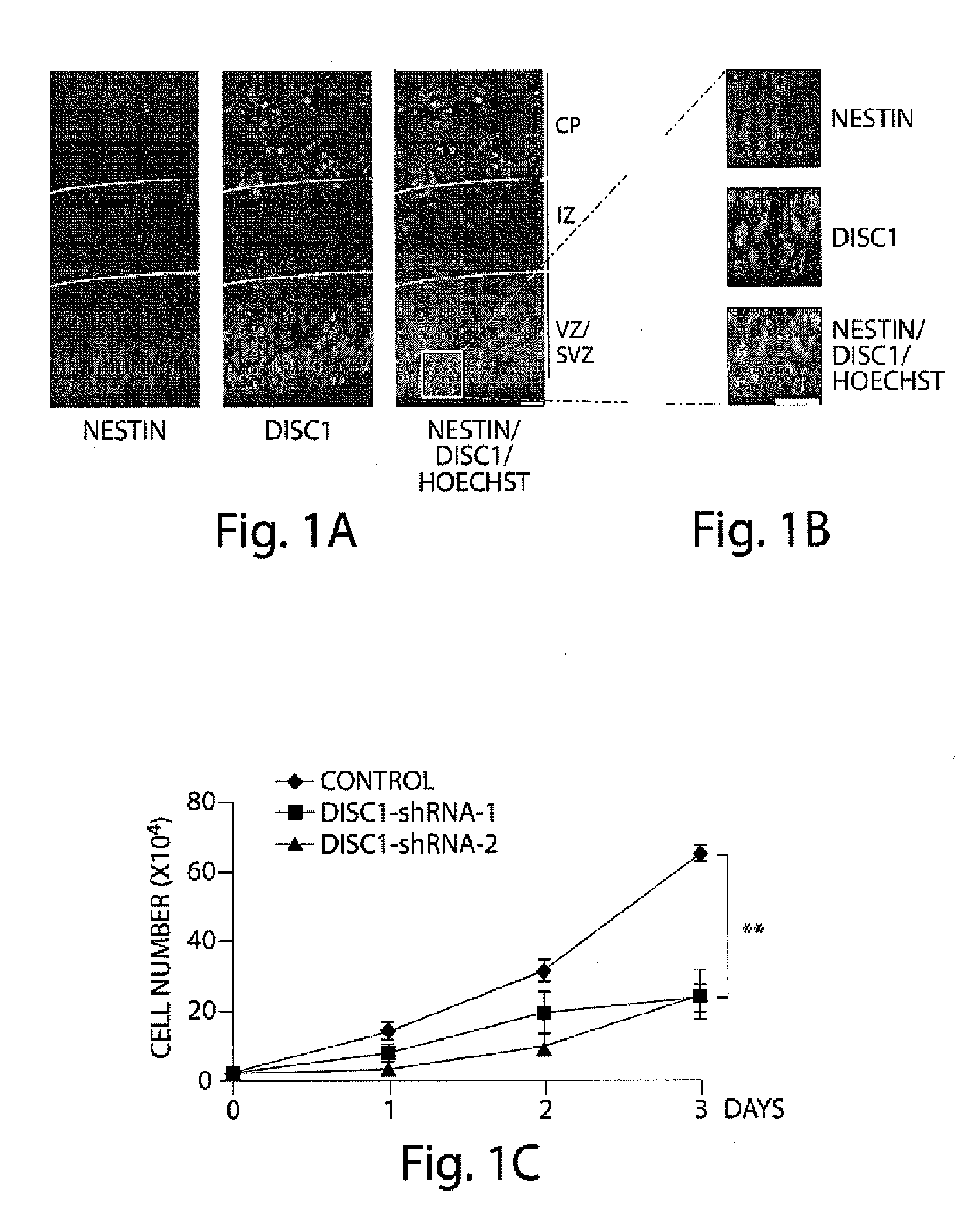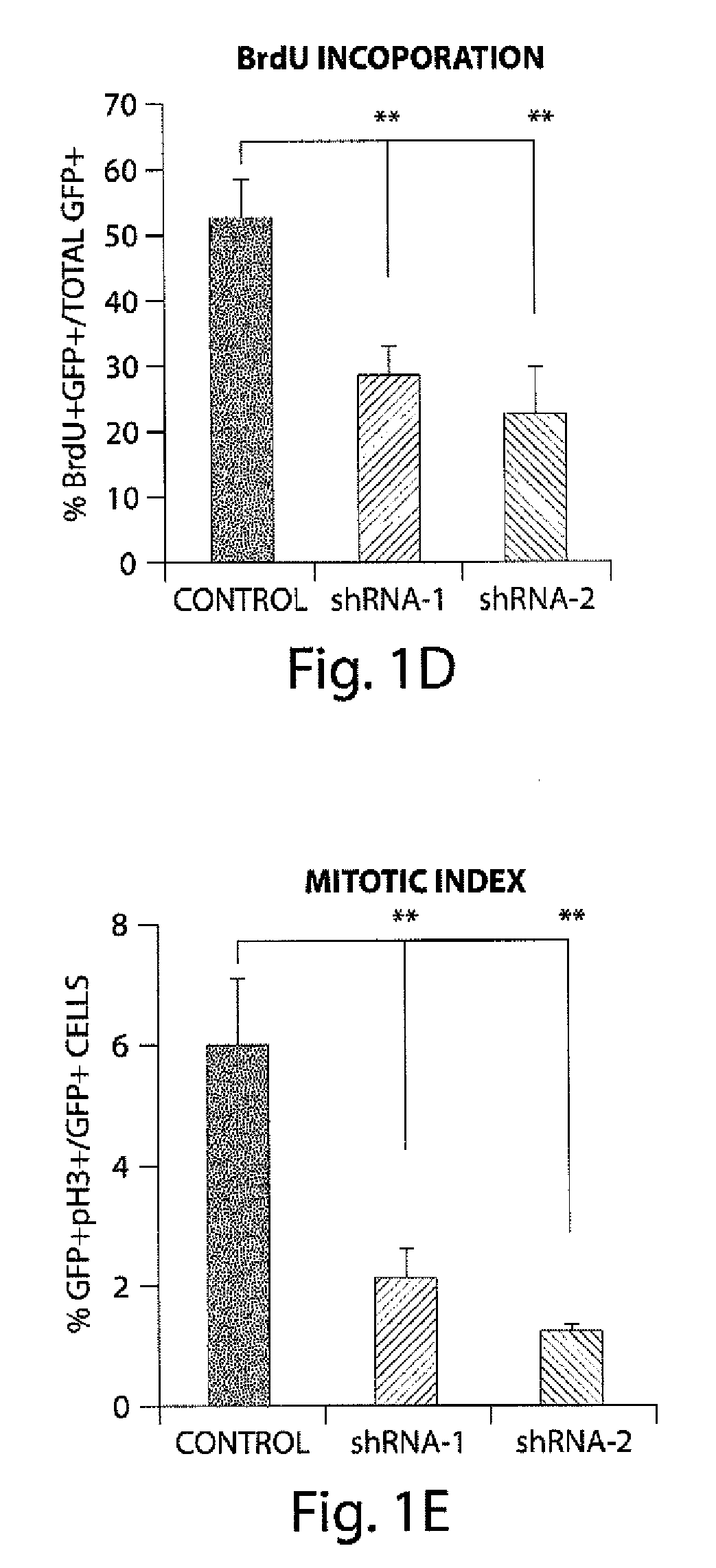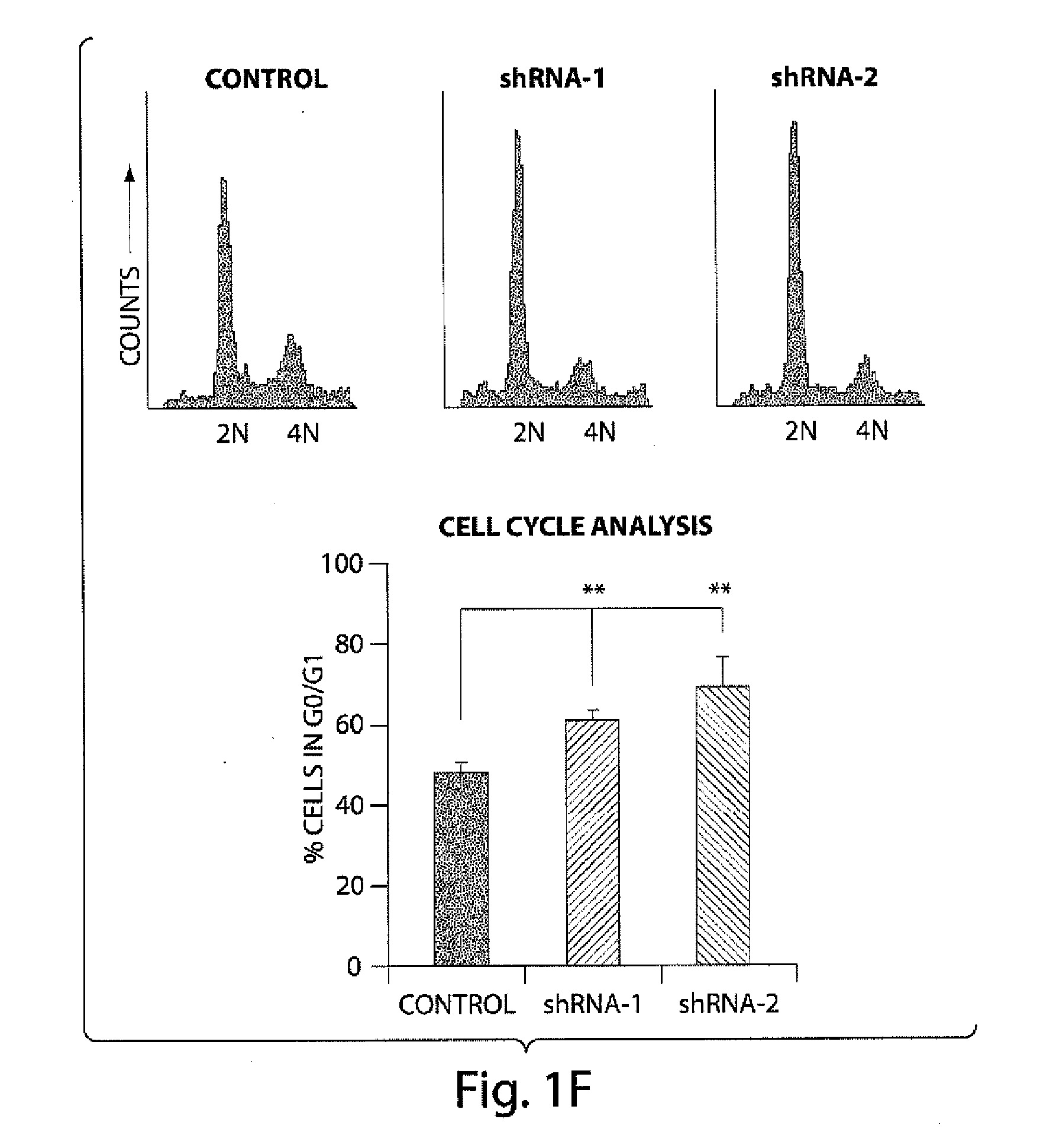Disc-1 pathway activators in the control of neurogenesis
- Summary
- Abstract
- Description
- Claims
- Application Information
AI Technical Summary
Benefits of technology
Problems solved by technology
Method used
Image
Examples
example 1
DISC1 Expression
[0267]Accumulating evidence supports a neurodevelopmental basis for schizophrenia (Ross, C. A., Margolis, R. L., Reading, S. A., Pletnikov, M. & Coyle, J. T. Neurobiology of schizophrenia. Neuron 52, 139-53 (2006); Chubb, J. E., Bradshaw, N.J., Soares, D. C., Porteous, D. J. & Millar, J. K. The DISC locus in psychiatric illness. Mol Psychiatry 13, 36-64 (2008); Arnold, S. E. Neurodevelopmental abnormalities in schizophrenia: insights from neuropathology. Dev Psychopathol 11, 439-56 (1999)). Expression of DISC1 peaks at E14-E15 in mouse embryonic brains, a period of active neurogenesis in the cortex, and gradually declines as development proceeds (data not shown) (Schurov, I. L., Handford, E. J., Brandon, N.J. & Whiting, P. J. Expression of disrupted in schizophrenia 1 (DISC1) protein in the adult and developing mouse brain indicates its role in neurodevelopment. Mol Psychiatry 9, 1100-10 (2004)). In adult mice, DISC1 is robustly expressed in the dentate gyrus (DG) an...
example 2
Role for DISC1 in Progenitor Proliferation
[0268]Based on its expression in neural progenitors, we looked into a potential role for DISC1 in progenitor proliferation. To approach this, we generated two specific shRNAs that silenced endogenous DISC1 expression (shRNA1 and shRNA2; FIG. 2). Upon transduction of adult hippocampal progenitor (AHP) cells with lentivirus expressing control or DISC1 shRNAs, we observed that DISC1 knockdown significantly decreased the total number of cells compared to cells expressing the control shRNA (FIG. 1c). Moreover, cells receiving DISC1 shRNA displayed a 2 fold decrease in BrdU labeling (2 hr pulse) (FIG. 1d, FIG. 8a) and a 3 fold decrease in mitotic index (FIG. 1e, FIG. 8b). FACS analysis revealed that DISC1 knockdown significantly increased the portion of cells in G0 / G1, and decreased cells in S phase and mitosis (FIG. 1f). The reduction of proliferation by suppression of DISC1 expression prompted us to pursue the reciprocal DISC1 gain-of-function e...
example 3
Role for DISC1 in Neural Progenitor Proliferation In Vivo
[0269]We next investigated whether DISC1 regulates neural progenitor proliferation in vivo. Control or DISC1 shRNA constructs were electroporated together with a GFP-expressing vector into E13 mouse brains, and analyzed 3 days later. During embryonic brain development, neural progenitors actively divide in the ventricular zone (VZ) and subventricular zone (SVZ). Upon evaluation of the positioning of GFP positive cells, we found that DISC1 knockdown caused a substantial reduction of cells in the VZ / SVZ (FIG. 2a, 30% GFP positive cells with control shRNA versus 13% in DISC1 shRNA-1 and 10% in shRNA-2 electroporated brains). There was a corresponding increase in GFP positive cells in the cortical plate (40.2% in control versus 59.6% in shRNA-1 and 62% in shRNA-2 electroporated brains). Therefore, DISC1 loss-of-function causes a depletion of cells from the proliferative VZ / SVZ.
[0270]To decipher the mechanism behind the observed di...
PUM
| Property | Measurement | Unit |
|---|---|---|
| Composition | aaaaa | aaaaa |
| Disorder | aaaaa | aaaaa |
| Sterile | aaaaa | aaaaa |
Abstract
Description
Claims
Application Information
 Login to View More
Login to View More - Generate Ideas
- Intellectual Property
- Life Sciences
- Materials
- Tech Scout
- Unparalleled Data Quality
- Higher Quality Content
- 60% Fewer Hallucinations
Browse by: Latest US Patents, China's latest patents, Technical Efficacy Thesaurus, Application Domain, Technology Topic, Popular Technical Reports.
© 2025 PatSnap. All rights reserved.Legal|Privacy policy|Modern Slavery Act Transparency Statement|Sitemap|About US| Contact US: help@patsnap.com



